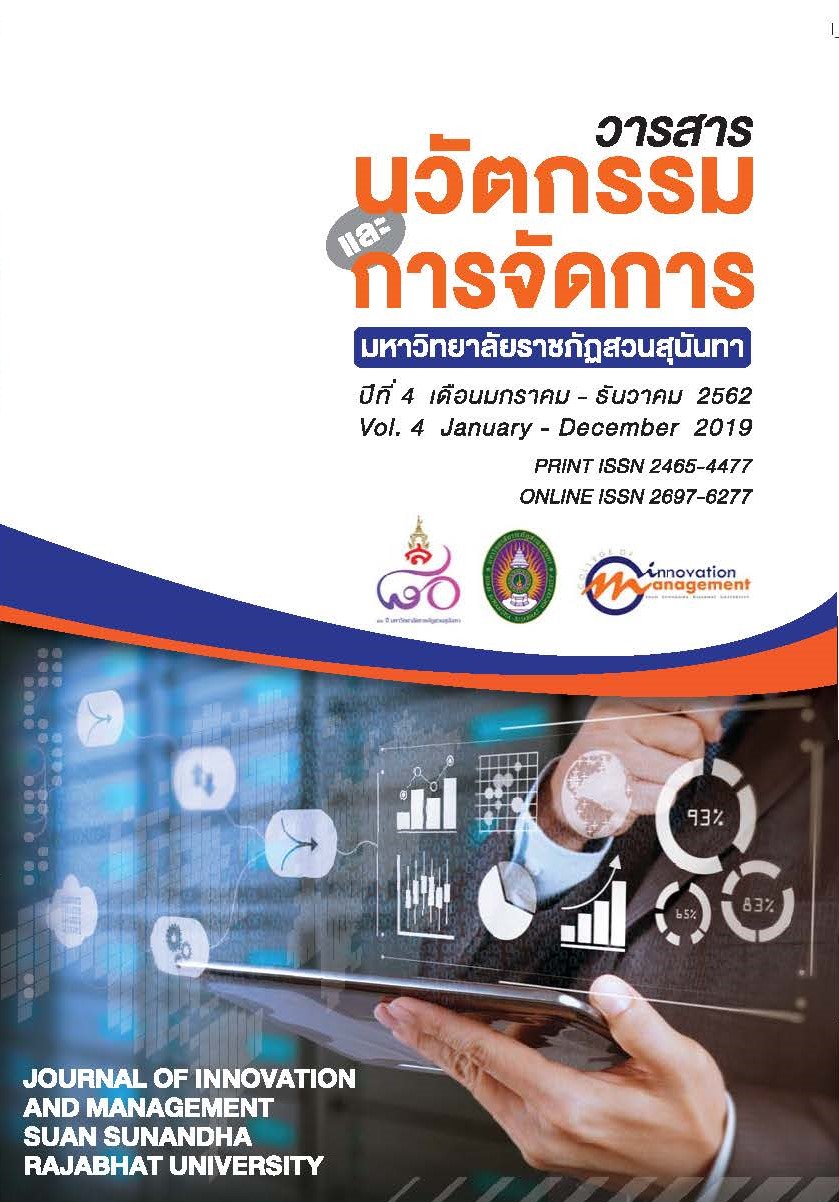The Mediating Effect of Employee Learning between Job Rotation and Employee Career Development: Empirical Evidence from the Banking Sector of Pakistan
Keywords:
Job Rotation, Employees Learning, Career Development, Management Trainee Officers (MTO’s)Abstract
Job Rotation is a widely accepted practice for employees learning in many organisations. The objective of this research is to use the Job Rotation concept as a career development mechanism for Management Trainee Officers (MTO’s) and assess the mediating effect of employee learning. As different organisations hiring MTO’s, this research proposes them to use Job Rotation to develop the career of newly recruited employees. The data are collected from 320 MTO’s of different commercial Banks located in Rawalpindi, Islamabad, and Peshawar. Structural Equation Model (AMOS) is used to test the model. Overall results show a positive and significant association between the constructs. Research reveals that job ration is a significant factor for employee career development and employee learning partially mediates the relationship between job rotation and career development. Research can be generalised to the banking sector and other organisations which are offering MTO programs. This research can help fresh graduates to build their career through a job rotation process, as they can learn by rotation of their position. The limitation of this research is the data collection time framework, mono method and crosses sectional approach is used, in future mixed research method can be used to explore more about job rotation concept.
References
Awang, Z. (2014). Structural Equation Modeling Using AMOS. Shah Alam.Malaysia: Penerbit Universiti Teknologi MARA.
Boud, D., and Garrick, J. (1999). Understanding of workplace learning. In D. Boud (Ed.), Understanding learning at work (1-11). London: Routledge.
Boudreaux, M. A. (2001). Career development: What is its role in Human Resource Development? In O.A. Aliaga (Ed.), Academy of HRD 2001 confeence proceedings (pp.805-812). Bowling Green, OH: Academy of Human Resource Development.
Brett, J. M. (1984). Job transitions, personal and role development. In K. Rowland and G. Ferris (Eds.), Research in personnel and human resource management, vol. 2: 155-185. Green-wich, CT: JAI Press.
Brunetto, R. and Farr-Wharton, R. (2000). A case study examining the impact of public-sector Nurses’ perception of workplace autonomy on their job satisfaction: lesson for management. International Journal of Management and Organizational Behaviour, 8 (5), 521-539.
Carnahan, B. J., Redfern, M.S. and Norman, B. (2000). Designing safe job rotation schedules using optimization and heuristic search. Ergonomics, 43(4), 543-560.
Coryell, B. (2011). How to help employee career development with staff rotation. [Online]. Retrieved 11 January 2019 from: http://www.itworld.com/itmanagementstrategy/184039/how-help-employee-career-development-staff-rotation
Chartered Institute of Personnel and Development. (2006). Annual survey. London: Chartered Institute of Personnel and Development (CIPD).
Campion, M. A., Cheraskin, L., and Stevens, M. J. (1994). Career-related antecedents and outcomes of job rotation. Academy of Management Journal, 37(6), 1518–1542.
Chin, W. W. (1998a). Issues and opinion on structural equation modeling. MIS Quarterly, 22(1), 7–16.
Festinger, L. (1957). A theory of cognitive dissonance. Evanston, IL: Row, Peterson.
Fornell, C., and Larcker, D. F. (1981). Evaluating structural equation models with unobservable variables and measurement error. Journal of Marketing Research, 18(1), 39–50.
Hair, J. F., Black, W. C., Babin, B. J., and Anderson, R. E. (2010). Multivariate Data Analysis (7th ed.). New York: Pearson.
Hair, J. F., Hult, G. T. M., Ringle, C., and Sarstedt, M. (2017). A Primer on Partial Least Squares Structural Equation Modeling (PLS-SEM). 2nd ed.. London: Thousand Oaks: SAGE.
Hall, D., Schneider, B., and Nygren, H. (1970). Personal factors in organizational identification. Administrative Science Quarterly, 15, 176-190.
Heider, F. (1946). Attitudes and cognitive organization. Journal of Psychology, 21, 107-112.
Kannana, V. R., and Tan, K. C. (2005). Just in time, total quality management, and supply chain management: understanding their linkages and impact on business performance. Omega, 33(2), 153–162.
Khan, M., Bilal, H., Mateen, A., and Haq, Z. (2017). The Mediating Effect of Knowledge Management System and Learning Culture on Human Capital Development. International Journal of Management And Applied Science, 4(5), 14-17.
Khan, M., Sentosa, I., and Salman, F. (2018). Exploring the role of transformational leadership in human capital effectiveness. World Journal Of Entrepreneurship, Management, And Sustainable Development, 14(2), 191-204. DOI: 10.1108/wjemsd-10-2017-0075.
Knight et al. (2008). Retention verses satisfaction; An empirical analysis of firefighter-paramedic retention and job satisfaction. In St. Petersburg Fire and Rescue, Florida. Management, 17, 1834–1851.
Kraimer, M.L., Seibert, S.E. and Liden, R.C. (2001). A social capital theory of career success. Academy of Management Journal, 44, 219–237. doi: 10.2307/3069452.
McGuire, M., MacCoy, D. and Perrin, B. (2010). Evaluation of Learning and Development at UNESCO. United Nations Educational, Scientific and Cultural Organization
Morrison, R. F., and Hock, R. R. (1986). Career building: Learning from cumulative work experi-ence. In D. T. Hall and Associates (Eds.), Career development in organizations: 236-273. San Francisco: Jossey-Bass. Organizations. Glenview, IL: Scott, Foresman.
Olorunsola, R. (2000). Job rotation in academic libraries; the situation in a Nigerian University library’ Library management, vol. 21. The Proceedings of the Academy of Human Resource Development, USA, 805-812.
Eriksson, T. and Ortega, J. (2002). The Adoption of Job Rotation: Testing the Theories. Triggs DD, King PM. Job rotation. Professional Safety, 45, 32–34.
Van der Sluis, L. E. C., and Poell, R. (2003). The impact on career development of learning opportunities and learning behavior at work. Human Resource Development Quarterly, 14(2), 159-179.
Werts, C. E., Linn, R. L., and Jöreskog, K. G. (1974). Intraclass reliability estimates: Testing structural assumptions. Educational and Psychological Measurement, 34(1), 25–33.
Wexley, K.N. and Latham, G.P. (1981). Developing and Training Human Resources in Organizations. Michigan, USA: The University of Michigan.
Yoder, D., Heneman, H.G., Jr, Turnbull, J.G. and Stone, C.H. (1958). Handbook of Personnel Management and Labor Relations. New York: McGraw-Hill.






